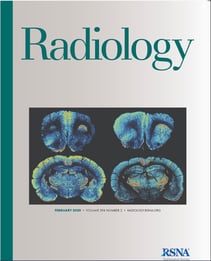a

A team of world-renowned scientists from Boston University School of Medicine have found that a potentially harmful chemical used in MRI scans can get left behind in sensitive areas of the brain. Contrast media (sometimes called 'dyes') are chemicals injected into the body to enhance the quality of MRI images. One of the biggest concerns in radiology in recent years is the safety of gadolinium-based contrast agents (GBCAs) used in magnetic resonance imaging (MRI).
A team of world-renowned scientists from Boston University School of Medicine have found that a potentially harmful chemical used in MRI scans can get left behind in sensitive areas of the brain. Contrast media (sometimes called 'dyes') are chemicals injected into the body to enhance the quality of MRI images. One of the biggest concerns in radiology in recent years is the safety of gadolinium-based contrast agents (GBCAs) used in magnetic resonance imaging (MRI).
The part of the brain called the cerebral cortex, which plays a critical role in learning, memory, and behavior regulation, is sensitive to rare earth elements like gadolinium (Gd). While Gd retention has been reported in the sub-cortex region of the brain, little is known about whether it ends up in the cerebral cortex itself despite intense clinical interest in the topic.
The researchers from Boston set out to answer this question by digitally mapping brains treated with GBCA. Using a Teledyne CETAC laser ablation system coupled to ICP-MS they sought to learn if Gd was detectable in the cerebral cortex, and if so, then where.
The scientists saw that Gd is not only retained in the cerebral cortex, but also that it is not distributed evenly. The latter discovery may implicate multiple routes by which Gd enters the brain. Researchers also showed that Gd was retained in areas also showing iron (Fe) enrichment, which may provide clues to how the Gd crosses the blood-brain barrier. This new information challenges current assumptions regarding GBCA exposure while offering new avenues for investigating potential neurotoxicity.
The full study can be found in the February 2020 issue of Radiology doi: 10.1148/radiol.2019190461
Interested in more information on Teledyne CETAC laser ablation systems?


